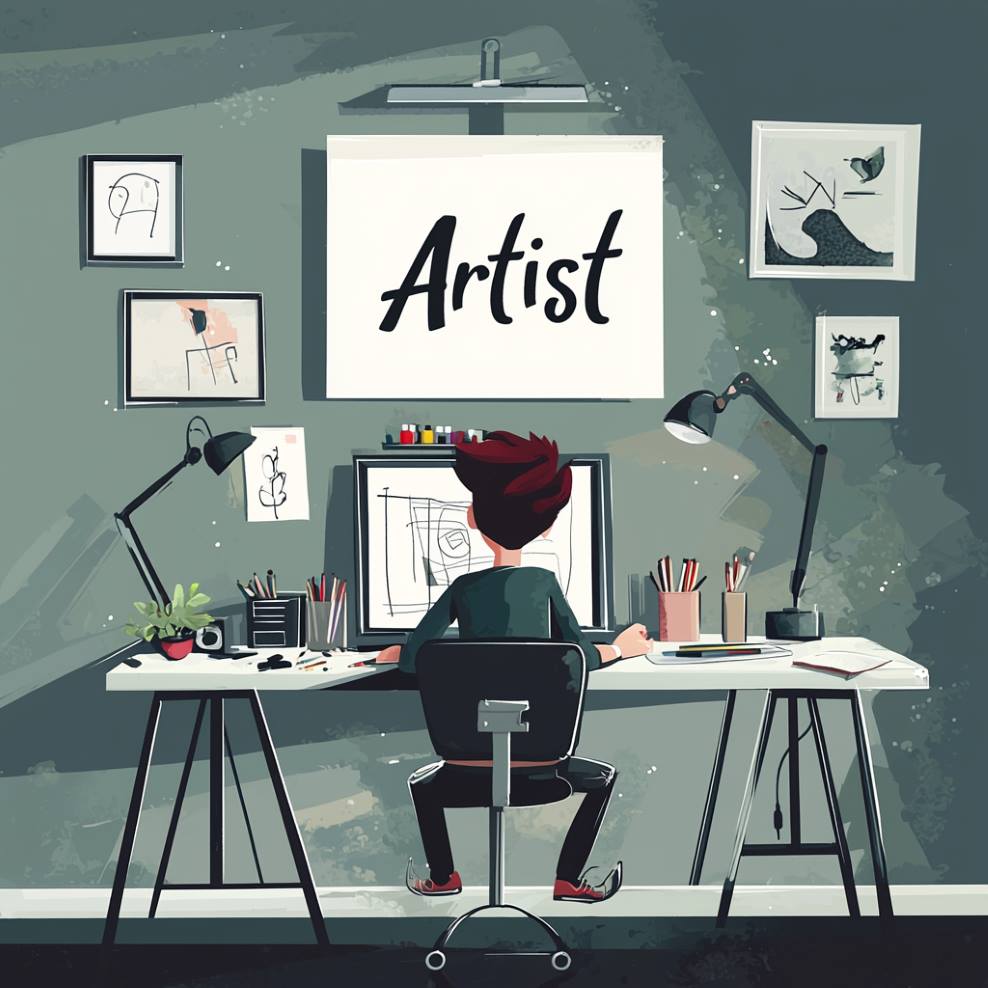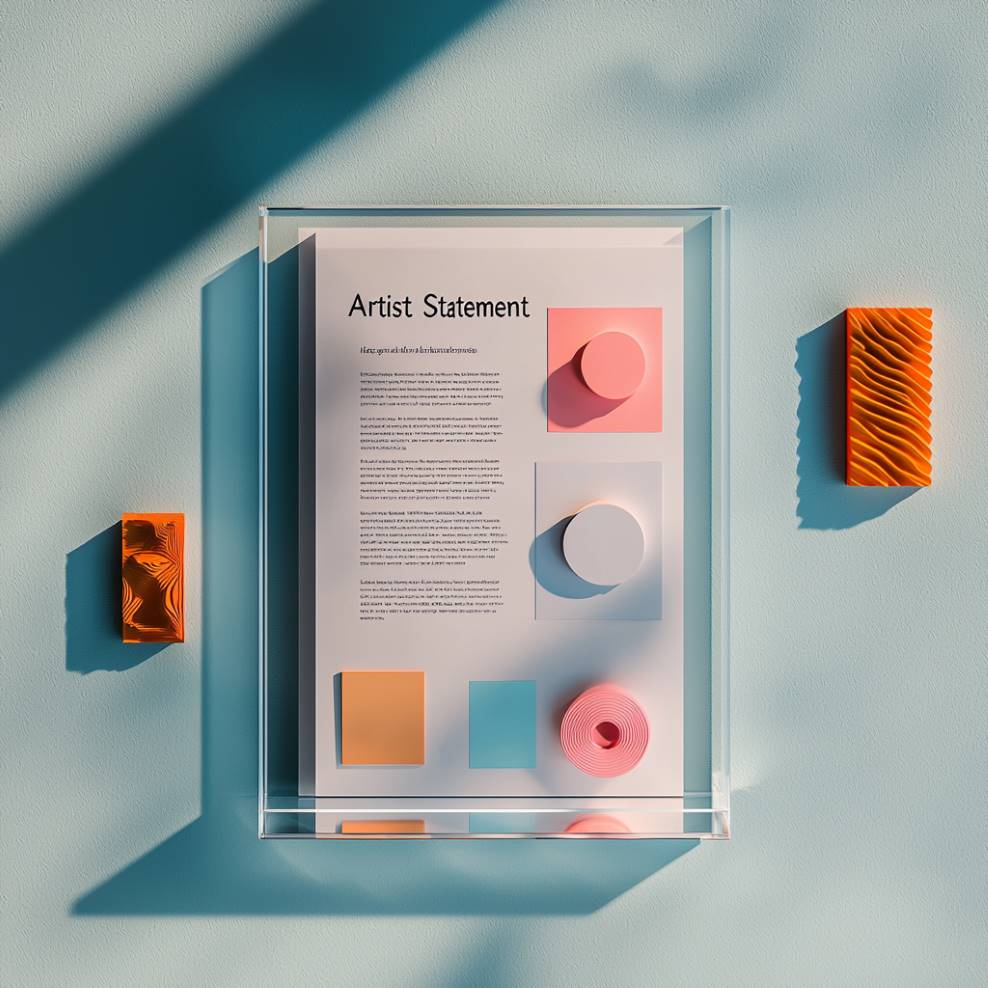We’ve all been there staring at a blank screen, cursor blinking mockingly, as we try to sum up our life’s work in 200 words. “Am I a visionary or just pretentious?” “Do I sound like a robot?” Artist statements can feel like trying to describe the color blue to someone who’s never seen the sky. But here’s the secret: a powerful artist statement isn’t about jargon or lofty ideals. It’s about clarity, connection, and a little bit of storytelling magic.
Let’s ditch the dread and dive in. By the end of this guide, you’ll find an artist statement sample and have created one that’s as authentic as your art and maybe even enjoy writing it.
Step 1: Understand the “Why” Behind Your Statement
Hint: It’s Not Just for Gallery Walls
An artist statement isn’t a resume or a manifesto. It’s a bridge between your work and your audience. Think of it as a friendly handshake that says, “Here’s what I do, why I do it, and why it matters.”
- Who’s it for? Curators, buyers, Instagram scrollers, or grant committees. Tailor your tone to them.
- What’s the goal? To inform, intrigue, and invite deeper engagement.
- Key takeaway: If your statement doesn’t make someone pause and look closer at your work, revise it.
Relatable struggle: A painter friend once wrote a statement so abstract, even she didn’t understand it. Spoiler: She rewrote it.
Step 2: Brainstorm Like a Messy Artist
Channel Your Inner Jackson Pollock
Grab a notebook (or a napkin—we don’t judge) and word-vomit everything about your work. No editing allowed. Ask yourself:
- What themes do I obsess over? (e.g., identity, decay, joy, climate anxiety)
- What materials/techniques define my process? (e.g., reclaimed wood, digital glitches, oil washes)
- What emotions or questions do I want to evoke?
Example snippet from a sculptor’s brainstorm:
“Rusty metal = time passing… childhood toys + industrial waste… nostalgia vs. consumerism… hammers = violence and repair.”
Key takeaway: Your raw ideas are gold. Mine them first, polish later.
Step 3: Craft a Killer Opening Line
First Impressions Are Everything
Your first sentence should hook readers like a bold brushstroke. Ditch clichés like “Art is my passion” or “Since childhood, I’ve loved color.” Instead, start with:
- A provocative question: “What if brokenness could be beautiful?”
- A vivid metaphor: “My paintings are silent screams in acrylic.”
- A personal revelation: “I sculpt with mud because it reminds me of my roots—literally.”
Why it works: A gallery owner once told us, “If the first line doesn’t grab me, I skip to the next artist.”
Step 4: Describe Your Process Without Putting Us to Sleep
“How” Matters as Much as “Why”
People love peeking behind the studio door. Share your process in a way that’s specific but relatable:
- Bad: “I use mixed media to explore dichotomies.”
- Better: “I collage vintage postcards with neon graffiti—like a argument between the past and present.”
Pro tip: Use active verbs. “I carve,” “I layer,” “I dismantle” sounds more dynamic than “I am inspired by.”

Step 5: Connect the Dots Between Your Work and the World
Why Should Anyone Care?
This is where you answer the “So what?” Link your art to universal experiences or current issues. Examples:
- “In a world obsessed with perfection, my cracked ceramic vases celebrate flaws.”
- “These photos of abandoned malls ask: What happens to spaces when capitalism moves on?”
Key takeaway: Make your audience feel like your art speaks to their lives, not just yours.
Step 6: Edit Like a Sculptor Chiseling Marble
Kill Your Darlings (Or at Least Tame Them)
Trim the fat. Aim for 150–300 words. Ruthlessly cut:
- Redundant adjectives (“deeply profound” → “profound”)
- Artsy buzzwords (“transcendent,” “ontological”)
- Vague statements (“I seek truth” → “I paint the tension between secrets and confession”)
Try this: Read your statement aloud. If you stumble, simplify.
Step 7: Test Drive Your Statement
Feedback Is Your Friend
Share drafts with:
- A fellow artist (they’ll spot clichés)
- Someone outside the art world (they’ll flag jargon)
- Your barista (if they “get it,” you’ve nailed clarity)
True story: A ceramicist revised her statement 12 times after feedback. Now it’s used in three galleries.
Sample Artist Statement: Breaking It Down
*“My work is a dialogue between chaos and control. Using shattered glass and embroidery thread, I stitch together fragments of my family’s migration stories—stories that are pieced but never fully repaired. Each piece starts with a hammer: breaking mirrors, windows, and wine bottles collected from my Brooklyn neighborhood. The act of breaking is violent, but the sewing that follows is meditative, a nod to my grandmother’s hands mending clothes during wartime.
In these sculptures, sharp edges meet soft threads, asking: Can destruction become a act of care? Can memory hold us together even when it cuts?”*
Why it works:
- Hook: Contrasts chaos/control.
- Process: Specific materials (glass, thread) + action (breaking, stitching).
- Connection: Ties to family history and universal themes of repair.
Click here to download an artist statement template with more artist statement samples to help you.
Avoid These Common Traps
- The Thesaurus Overdose: “My oeuvre interrogates hegemonic paradigms.” → Translation: “I make art about power.”
- The Humblebrag: “Though I’m self-taught, my work has been compared to Basquiat.”
- The Mystery Novel: Don’t make readers decode riddles. Be clear, not cryptic.
Your Artist Statement Is a Living Document
It grows as you do. Revisit it yearly. And remember: Your art speaks first. The statement just whispers, “Here’s how to listen.”
Now, go write something that feels as bold as your work. And if you get stuck? Stare at your art, not the screen. The answers are already there.
